Learn how to make the cutest stretch bracelets using flat tila beads, also known as miyuki beads.
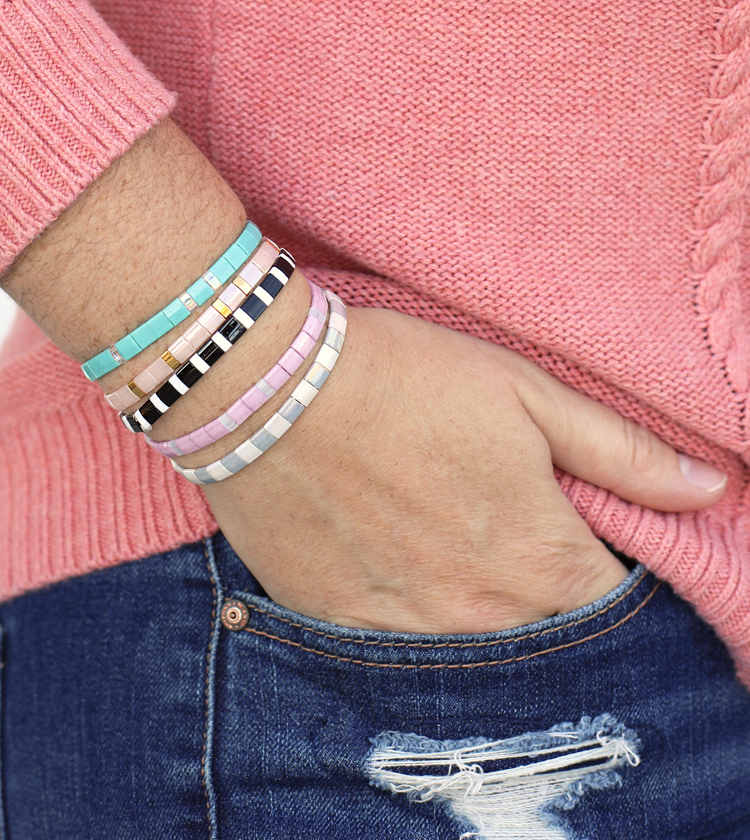
Today’s craft tutorial is a good one. I’m going to show you how to make these darling flat bead bracelets. I’ve seen them trending at fancy boutiques and clothing stores, so I decided to do what I always do… learn how to make them myself. Ha ha! Not only can I choose the exact color, size and pattern, but each bracelet ends up costing just a couple of dollars so it’s a huge savings from what the boutiques were charging.
Let’s get started with everything you need to know to make these darling flat bead bracelets.
What Are Tila Beads?
Tila beads, also known as Miyuki beads, are little flat tile-like beads that have two holes in them. Tila beads come in full squares that measure 5mm x 5mm and half squares that measure 2.5mm x 5 mm and some even smaller ones that are even thinner.
Tila beads come in tons of different colors, textures, sheens and finishes. Here are some examples:
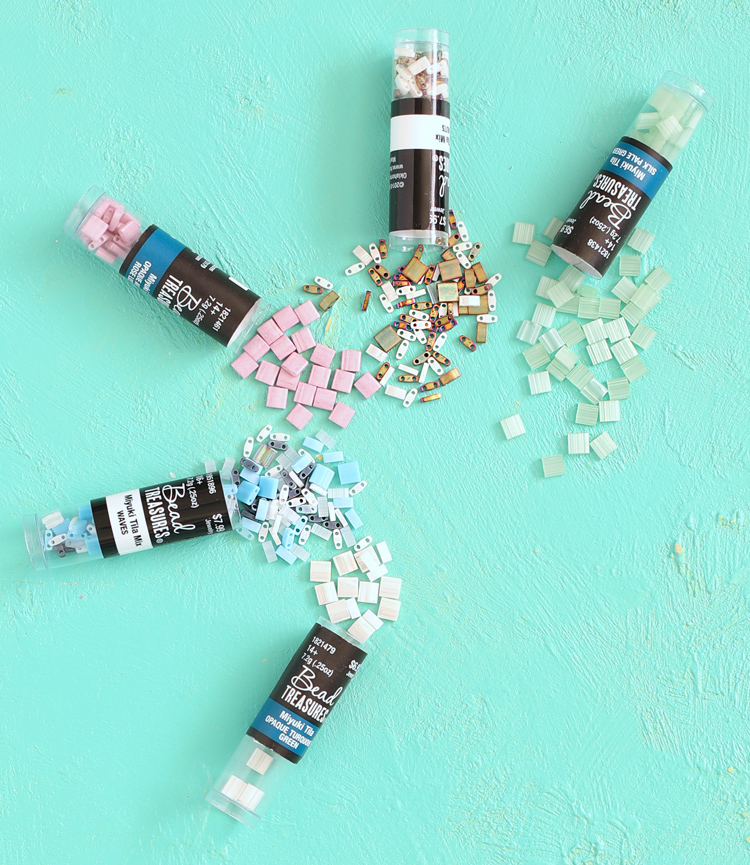
To make a tila bead bracelet, you will need the following supplies:
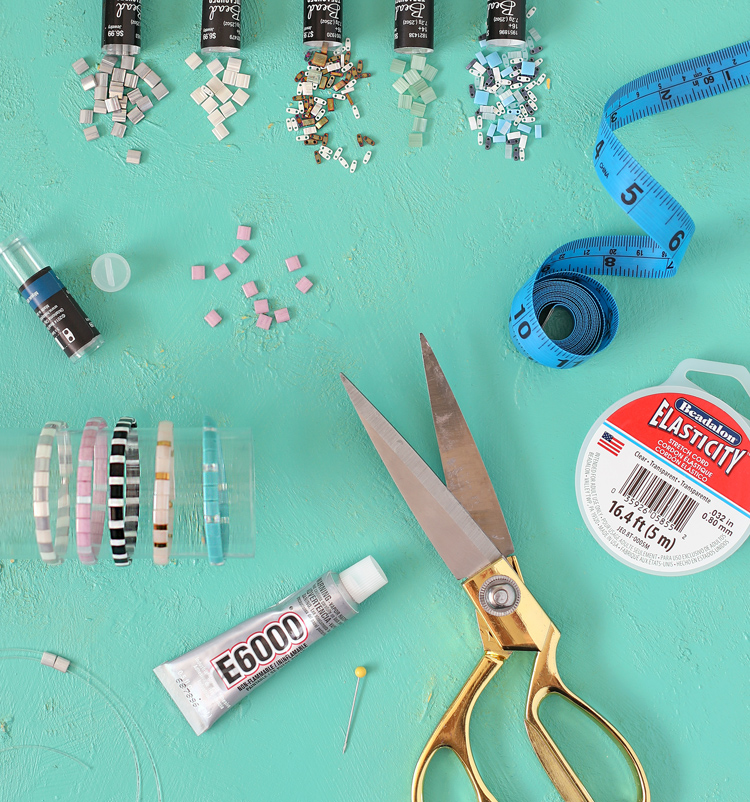
Materials Needed
This post contains affiliate links.
- Tila Beads
- Stretch Bracelet String
- Bracelet Glue or E6000 Glue
- Straight Pin
- Scissors
- Measuring Tape
Where To Buy Tila Beads
Hobby Lobby has a decent selection of Miyuki tila beads and when they go on sale for 50% off, the price is really good. All of the beads shown in these photos are from Hobby Lobby.
Amazon carries an even larger variety of tila beads. I linked to the seller I thought had the best selection for the price.
If you want every type of tila bead known to man, then Mack & Rex is the shop for you. They have so many great colors and fun combo packs. Their prices are a little higher, but the selection can’t be beat.
Stretch Bracelet String
The main thing you need to know about stretch bracelet string is that it comes in different thicknesses and that it’s worth paying more for good string so your bracelet doesn’t easily break.
For my bracelets I used 0.8mm clear stretchy bracelet cord from Hobby Lobby. This clear stretchy bracelet string on Amazon is very similar and gets great reviews. You can also use the thinner 0.5mm string. It is stretchier and easier to thread through the beads, but not as durable since it’s thinner.
You will need approximately 24 inches of string for each bracelet you make. This should help you calculate how many bracelets you can make with each pack.
Instructions
Step 1: Begin by cutting two twelve inch pieces of stretch cord. Since the beads each have two holes in them, you will be stringing the entire bracelet with two strings. Give each string a good stretch before adding any beads.
Step 2: You can lay out your entire pattern ahead of time if you’re doing something intricate, but my favorite bracelets have a random pattern to them, so I just make two piles of beads and start stringing.
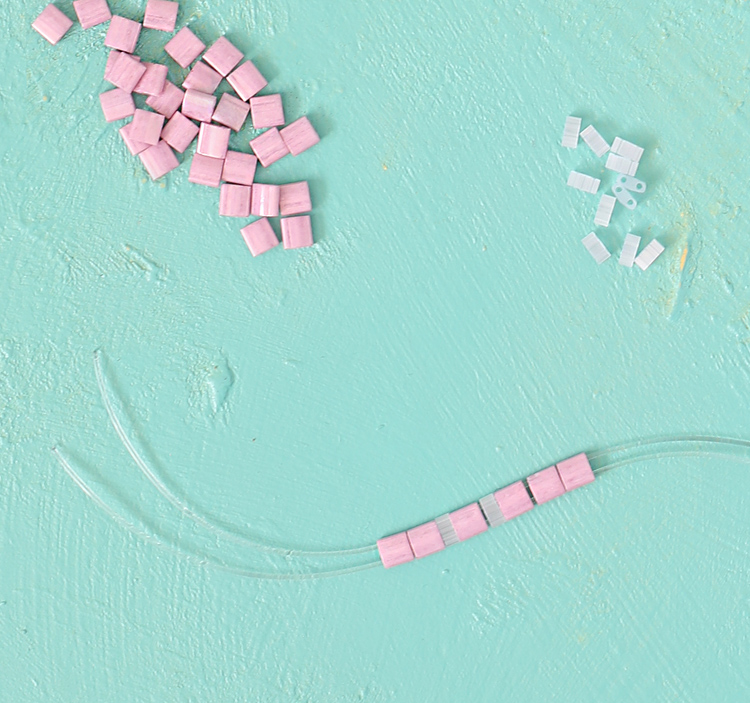
Keep adding beads until the bracelet is the right size to fit your wrist.
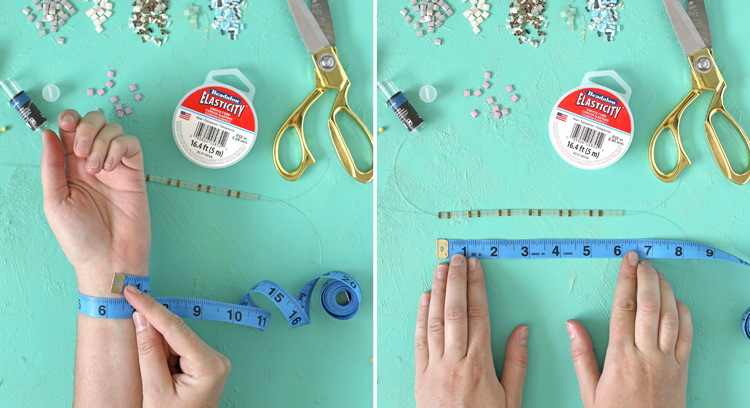
Step 3: To finish off your bracelet, you’ll want to tie a really sturdy knot called a surgeon’s knot. Here’s a super short ad-free video to show you how to tie a surgeon’s knot. It’s easy, promise!
You’ll do this twice, once on each string. Be sure to tie the same string to itself.
Step 4: Dip a straight pin into the E6000 glue and use it to dab just a tiny bit of glue onto the knots to help secure them. If you’ve never used E6000 glue before, don’t squeeze the bottle, whatever you do!! It turns into a glue volcano and starts squirting out uncontrollably. If you know, you know. If you don’t know, take my warning. Ha ha. Once the glue is dry, trim off the excess string close to the knot.
Optional Step: Some people prefer to use a crimp cover to go over the knot of the bracelet. You just slip the C-shaped metal bead over the knot, then clamp it down using needle nosed pliers. Crimp covers are really common, so they’re available at every craft store in the jewelry aisle. This step is optional and up to your personal preference. I actually like just the knots and think they disappear more and make for a more seamless bracelet. Here are examples of both types so you can decide for yourself:
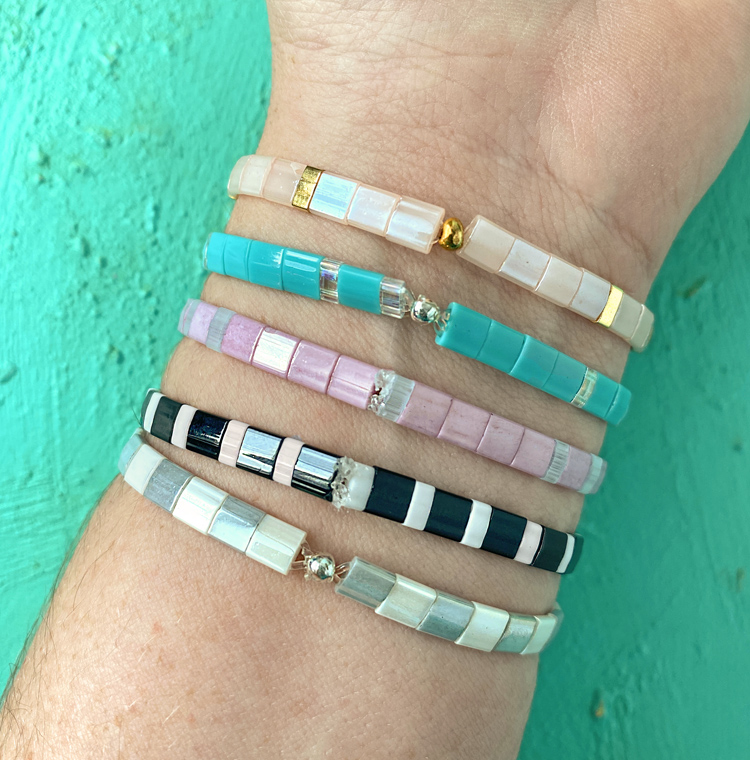
Another great way to finish off a stretch bracelet is to hide the knot inside of a bead. The 0.8mm stretch cord is pretty thick and once tied in a knot, the holes in the tila beads are too small for the knot to fit inside. But if you use thinner cord and tie very tiny knots, you might be able to do this method. It’s my personal favorite when it works.
FREQUENTLY ASKED QUESTIONS
How Many Tila Beads Are In A Gram?
There are approximately 12 beads per gram, so the little tubes of beads shown in these photos have about 86 beads each, which should be enough to make two bracelets.
How Many Beads Do I Need To Make A Bracelet?
Plan on 5 beads per inch. A 6 inch bracelet uses 30 beads and a 7 inch bracelet uses 35 beads. I’d say most women’s wrists range in size from 6 inches to 7.5 inches.
Tila Bead Bracelet Video Tutorial
Like this project? Pin it to save it for later!
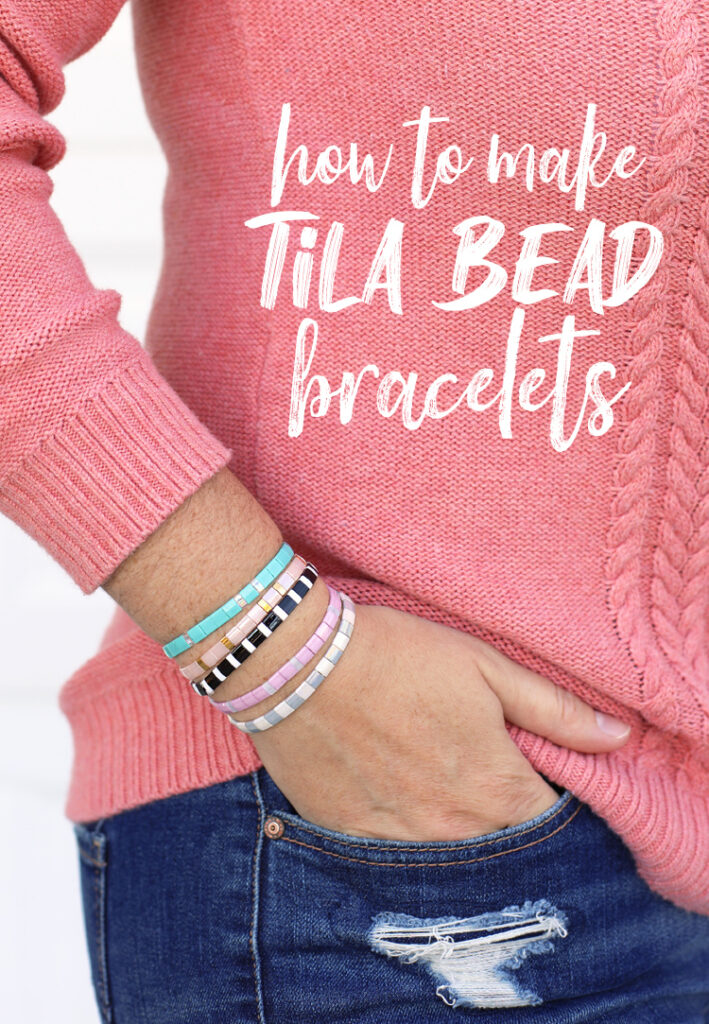

Comments & Reviews
Thank you so much !
Great tutorial! I have followed the instructions on the Mack & Rex site but I think your instructions are better! Thanks for posting!
Thank you for the easy beginner tutorial. Had no idea it was sooooo easy.
These are pretty I’ve enjoyed making these thanks for the ending closeure tips
I’m love this and can hardly wait to get started. Thanks
How do you get the slight twist out of the tila bead bracelets? It drives me crazy that it doesn’t want to lay completely flat. Is it avoidable, or unavoidable?
One thing that might help is stretching out the string a few times before adding the beads. I think it can also happen when you are tying the knot if the tension is lopsided as you tie.
I like to use fine cord (longer than your wrist measurement and tie the two strings at each end into a small knot. Then use another small piece of cord to make a sliding knot.
I think the problem with using a crimp bead at the end is that the tiles don’t lay flat anymore and there is a definite bend where the ends were connected.
A crimp cover on each strand looks better than one on both strands.